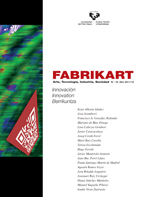The integration of innovations: a new paradigm favouring social change
##plugins.themes.bootstrap3.article.main##
##plugins.themes.bootstrap3.article.sidebar##
Abstract
The objective is to carry out an exploratory analysis to confirm that the determining force in the origin of cubism and the «cubism revolution» was the pictorial innovation process, fundamentally coined by Picasso and Braque.
For this purpose, a path has been initiated through the history of innovation since its origins, although more particularly after the Second World War, the moment in which the term R&D became popular.
Joseph Alois Schumpeter stands out with his work on the theory of cycles based on innovations and the entrepreneurial businessperson, as well as the idea of «creative destruction».
The Frascati Manual and the Oslo Manual, in its 2005 edition, set the basis for the current concept of R&D and innovation.
The detection of the «innovation gap» in the United Kingdom, motivated by the lack of correspondence between the measurements conducted and the results obtained in comparison with other countries, leads to the revision of the entire system. The United Kingdom adopts a new strategy called «Innovation Nation», incorporating the «hidden innovation» in the system.
The Basque Country has its «paradox of innovation» by not concurring well the relatively low contribution in R&D with good economic results. The business practice and structure seem not to be conducive to the modes of innovation based on science and technology (SIT model) and maybe, they adapt better to those based on experience (DUI model).
Progressing in the reflexion, the innovations of aesthetic content are analyzed: on the one hand, «soft» innovation, which is to say, that innovation which stands out for its aesthetic attraction. On the other, the «Creative Industries» are also analyzed, which have their origin in creativity and create wealth through the generation of intellectual property. The creativity and ability to produce new and useful work is also analyzed.
Lastly, the review of the «Pluralist Model of Innovation: the Example of the Humanities» is included, written by Professor Javier Echeverría and which thoroughly analyzes the work of art as a new source of innovation.
My doctoral thesis will be based on these last innovations described. I trust to demonstrate what the determining engine of innovation was for the «cubist revolution».

